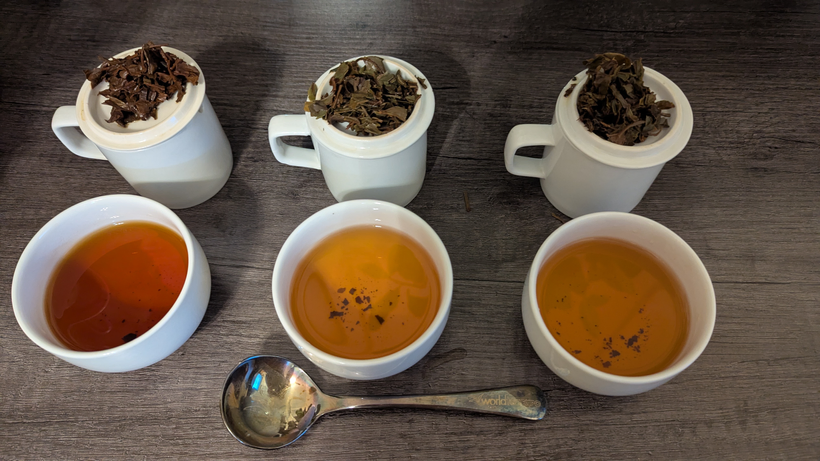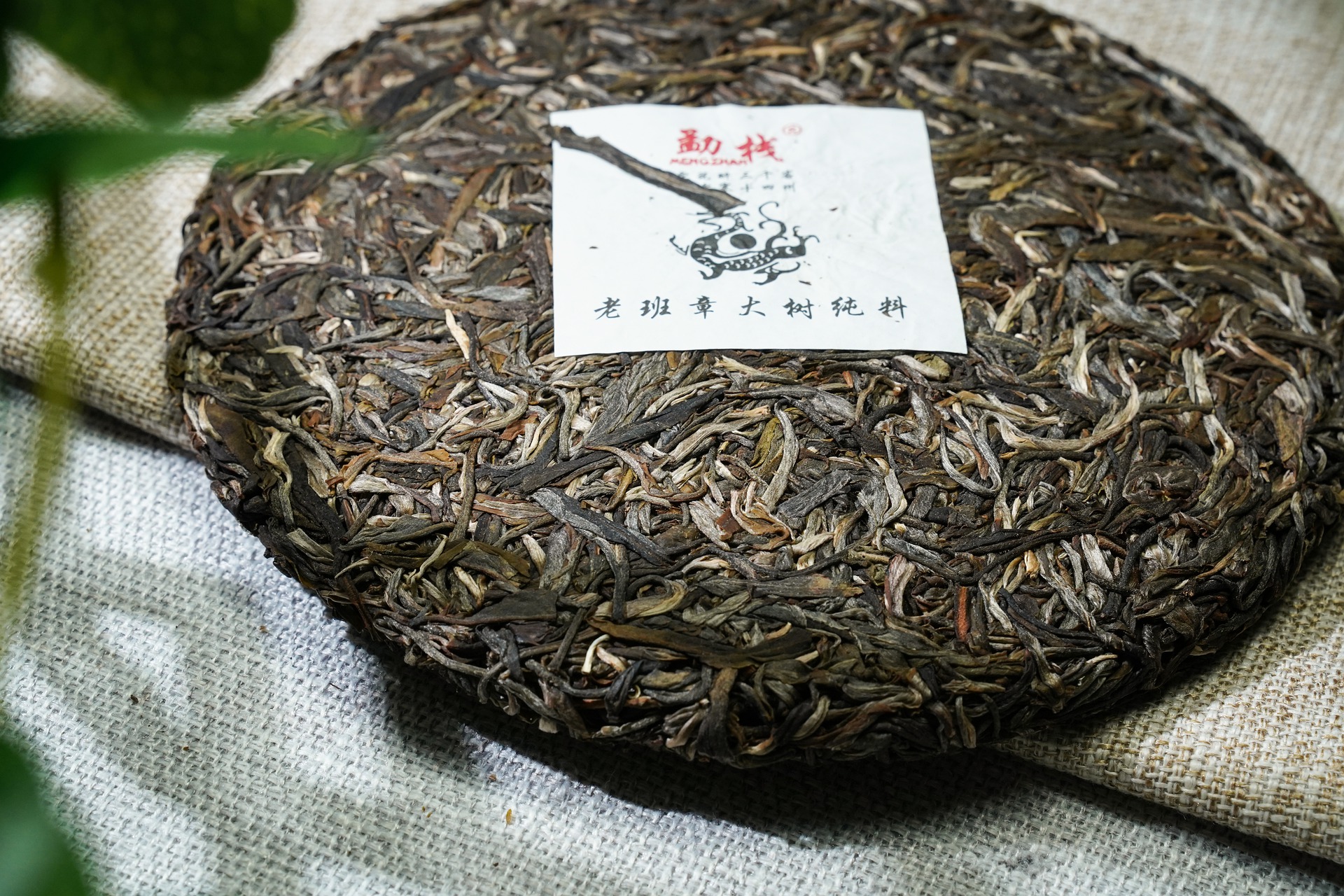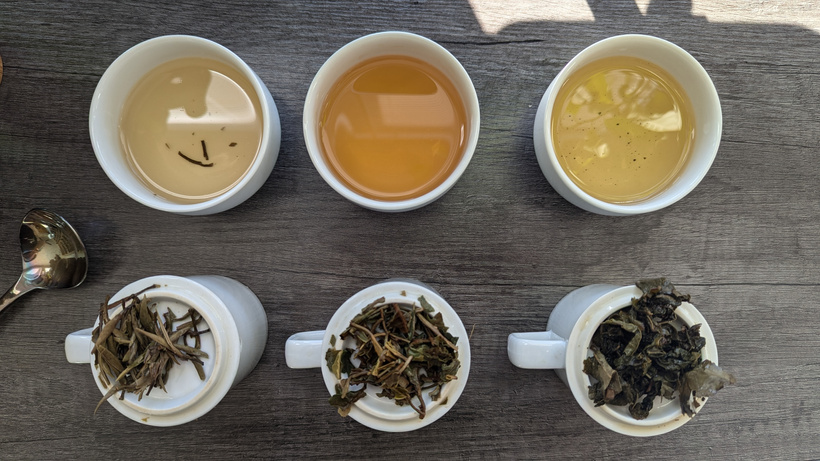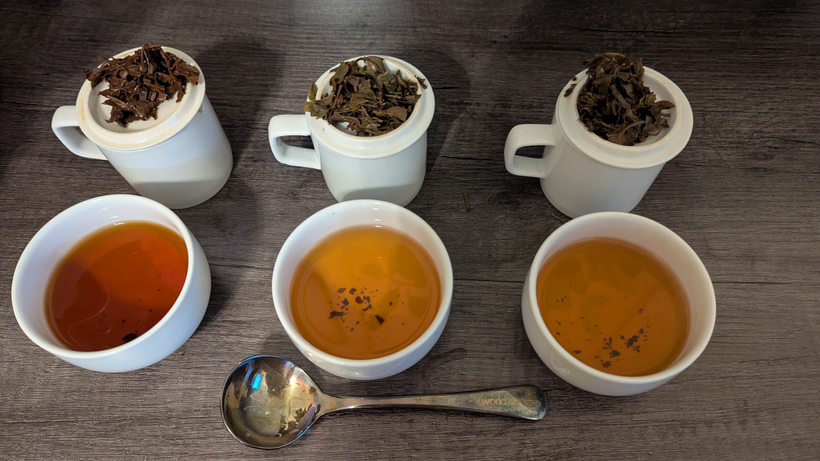One of the best ways to learn more about tea and refine your palate is to do comparative tastings. Drinking different types of tea side by side will help you understand the individual characteristics that distinguish them from one another. It’s also a lot of fun! In this post, I’ll share three different ways to plan a comparative tea tasting.
What Do You Need for a Comparative Tea Tasting
Professional tea tasters prepare tea in a standardized way using fully boiling water and extended brewing times. The goal in that setting is to create a stress test that brings out any faults in the tea. You don’t necessarily need to do the same for personal tastings, but grouping teas according to their water temperature and infusion times will be helpful. Tasting from the lightest to the strongest tea will also make it easier to pick up more delicate notes.
2+ varieties of tea to compare
The more teas you have, the more challenging it will be, so start small and work your way up.
A way to brew
You’ll want to have duplicate tools to brew each of the teas. That can be infuser baskets, gaiwans, or cupping sets; whatever works best for you.
Electric tea kettle
Using an electric kettle will help to make sure all of the teas in your flight are made with the same water temperature.
Somewhere to jot down your thoughts
Have a notebook or piece of paper handy to jot down your tasting notes as you taste the teas.
Horizontal
Horizontal tastings pair up similar teas that are also contrasting in some way. They can be the same type of tea but from different regions, or the same category of tea but made with different processing methods. The possibilities are limitless! Horizontal tasting is one of the best ways to help your senses understand what makes a particular tea unique. Remember to use your eyes, nose, and taste buds to really taste tea like a pro.
Here are some ideas for horizontal tea tastings to try:
- Cultivars of sencha
- Dancong oolong aroma varieties
- Chinese vs Japanese green teas
- Tie Guan Yin from China vs Taiwan
- Different roast levels of oolong from the same region
- Silver Needle vs Bai Mu Dan, and Shou Mei
- Smoked vs unsmoked Lapsang Souchong

Vertical
Vertical comparative tea tasting revolves around teas of different vintages from the same producer. The key to vertical tastings is keeping the producer and tea the same, but changing up the factor of time. It might be more difficult to come up with tasting notes when the teas are so similar, but practice makes perfect. The more time you spend consciously taking tea, the easier it will become.
Here are some ideas for vertical tea tastings to try:
- Dragonwell from last year vs the current year
- Shina vs later harvest sencha
- 1st, 2nd, and Autumn flush Darjeeling
- Puerh aged in different ways
- Multiple vintages of the same puerh
- Korean Woojeon vs Sejak
Not all teas are meant to be aged, but tasting a tea that is getting to be past its prime alongside the new batch can still provide us with valuable sensory information.

Blind
Once you’ve gotten a handle on horizontal and vertical comparative tea tastings, it’s time to take it to the next level. Do you think you can tell multiple teas apart just by tasting? Blind tastings can be horizontal or vertical. However, looking at the dry or infused leaves isn’t allowed because that can often be a dead giveaway. You’ll have to deduce what kind of tea it is based solely on the appearance, smell, and taste of the brewed tea.
That said, being blindfolded around very hot liquid isn’t the safest idea. You can have a friend prepare the tea out of eyesight. Another option is to have someone label the cups with numbers or letters and then swap them around after you’ve brewed the teas yourself. This is also a fun activity to do with a group of tea-loving friends.

Have you tried comparative tea tasting before? What did you learn from it? I’d love to hear from you in the comments below!
Help Support This Site

Please support my work in tea by joining my Patreon community. For $2-$5 a month, you’ll receive access to exclusive behind-the-scenes content, my private Discord server, surprise quarterly packages, and more!

